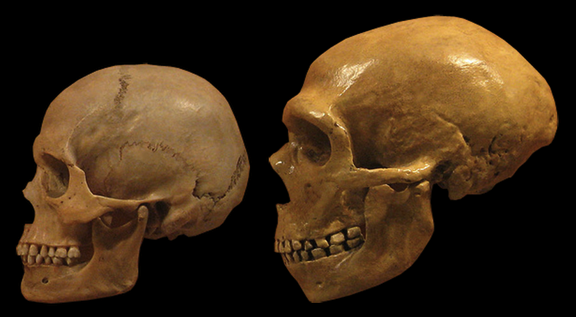Unearthed over a century ago on the island of Jersey, a pair of ancient teeth are rewriting the story of Neanderthals in Europe. A recent study published in the Journal of Human Evolution suggests these teeth belonged to the offspring of Neanderthals and modern humans, offering fresh evidence of interbreeding between these close relatives.
The teeth were discovered in La Cotte de St Brelade, a cave on Jersey’s southwestern coast, known to have been inhabited by Neanderthals as far back as 250,000 years ago. Modern humans arrived in Europe around 40,000 years ago, and Neanderthals vanished roughly 5,000 years later.
Researchers from the UK and Germany revisited these teeth, originally classified as Neanderthal in 1911. Using advanced computed tomography scans, they identified features defying typical Neanderthal anatomy. The tooth necks resembled those of modern humans, while lacking the characteristic Neanderthal transverse crest. This blend of features pointed towards a hybrid origin – offspring of both Neanderthals and modern humans.
Interestingly, the study also revealed these were teeth from two separate individuals, not one as previously thought. Additionally, radiocarbon dating placed them at around 48,000 years old, potentially representing some of the most recent Neanderthal remains discovered.
This discovery sheds light on the frequency of interbreeding between these hominid species. It challenges the notion of a clear-cut Neanderthal extinction, suggesting they may have integrated into the human lineage. Modern humans outside Africa carry roughly 2-3% Neanderthal DNA, a testament to this genetic mixing.
Furthermore, the Jersey teeth mark the first evidence of Neanderthal-human interbreeding in such a western European location. This finding broadens our understanding of their interaction across the continent.
The Jersey teeth are a fascinating reminder that our evolutionary story is one of complex intermingling. These ancient chompers not only belonged to individuals with mixed ancestry but also offer clues about the frequency and geographical extent of this interbreeding. As research continues, these tiny fossils might unlock even more secrets about our shared past with Neanderthals.
